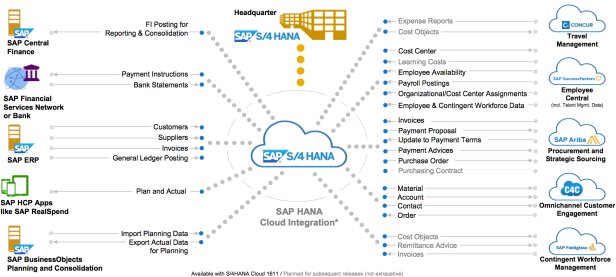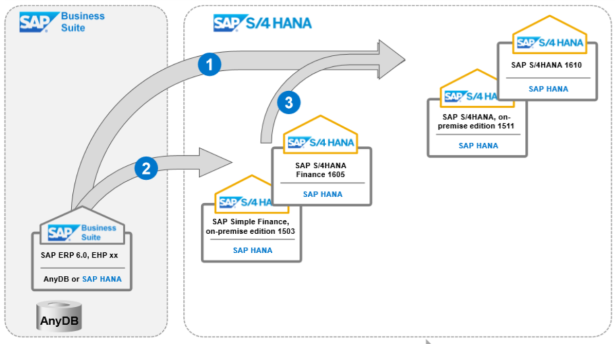In October 31st, 2016 SAP released the S/4HANA 1610 on-premise. Before that, the last release on-premise was S/4HANA 1511, released in November 2015, which was the first end-to-end offering by SAP as the first version of SAP’s next-generation ERP. There were a lot of expectations after a year of development. Below I will explore in this post SAP’s strategy for deployment of new releases.

Cloud deployment releases are delivered quarterly per year while on-premise implementation will have one major release per year, supplemented by feature pack stacks (FPS) periodically through the year, with features and functions innovations. SPS will also be released periodically providing fixes to all releases.

Deployment Options
SAP S/4HANA can be deployed on Cloud or On-premise.
- On Cloud, it is released the scope “fully simplified” with the available best practices and guided configuration.
- On-premise, it can be done a combination of simplified and non-simplified functionalities to accommodate core and non-core processes with the existing SAP Business Suite (ECC).
Long-term it is possible to switch from premise to cloud and vice-versa.
Why Cloud?
In today’s business 90 of the CIO’s are considering a Cloud deployment strategy.
The cloud is designed for companies that wants standardized core business scenarios or specific scenarios and LoB combined with fast innovation cycle, standardization, fast adoption of innovation, simplification, fast time to value add, elasticity, scalability.
The rapid innovation cycle, the best practices and immediate availability in the cloud makes this deployment the perfect opportunity to simplify the consumption of IT software and services related to infra-structure, backup, security, database, etc.
SAP is offering to customer several different deployment options:
- SAP S/4HANA on premise
- SAP S/4HANA on the HEC (Hana Enterprise Cloud) – Hybrid
- SAP S/4HANA Private
- SAP S/4HANA Public
Each layer is defined for Software, Platform and Infrastructure as a service (SaaS, PaaS, IaaS), except on-premise, that the layers are the same but not “as a service” model. Once at the cloud, SAP is responsible and it will automatically update the quarterly releases to the customer’s systems. The burden of upgrades will be no longer on customer’s IT, leaving to the customers the opportunity to be always on top of the latest and greatest, focusing on tests only.
Companies adopting SAP S/4HANA will have 3 different options to move to S/4HANA:
- New Implementation (aka Greenfield) – This is a fresh new implementation of SAP S/4HANA.
- Conversion – This is a migration to a new S/4HANA instance from an existing SAP ERP.
- Landscape Transformation – This is a consolidation to S/4HANA by multiple landscapes and instances into S/4HANA.

I may write a post to each of the 3 options later to explain the main characteristics and differences (and benefits) of each in more details.
Cloud Guided Configuration
While on premise, there is no “assistance” to the configuration and support, Spro and IMG will be there for you, in the Cloud deployment offers the Cloud Guided Configuration which helps implementation project and configuration, best practices adoptions, pre-configuration building block and guided adjustments and updates.
Watch here the Live Demo of SAP S/4HANA Guided Configuration
Cloud – Integration capabilities of the S/4HANA
Fast-growing scope:

© Leandro da Pia Nascimento and SAPBR.COM WordPress.com, 2017. Unauthorized use and/or duplication of this material without express and written permission from this blog’s author and/or owner is strictly prohibited. Excerpts and links may be used, provided that full and clear credit is given to Leandro da Pia Nascimento and SAPBR.COM with appropriate and specific direction to the original content.



Excelente artigo Pia.
LikeLiked by 1 person